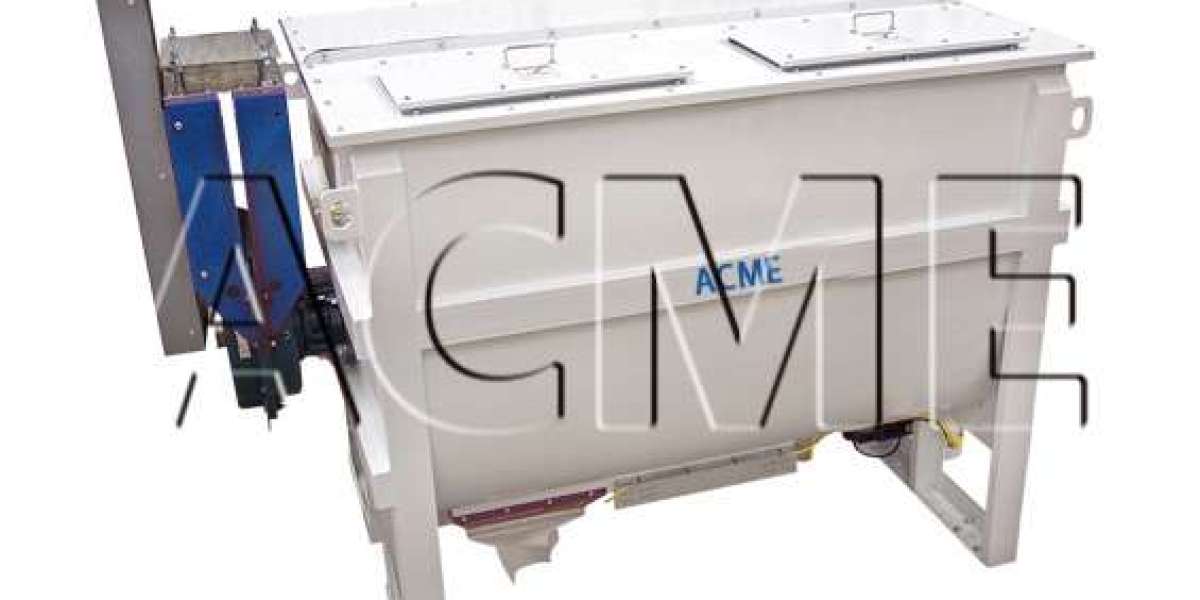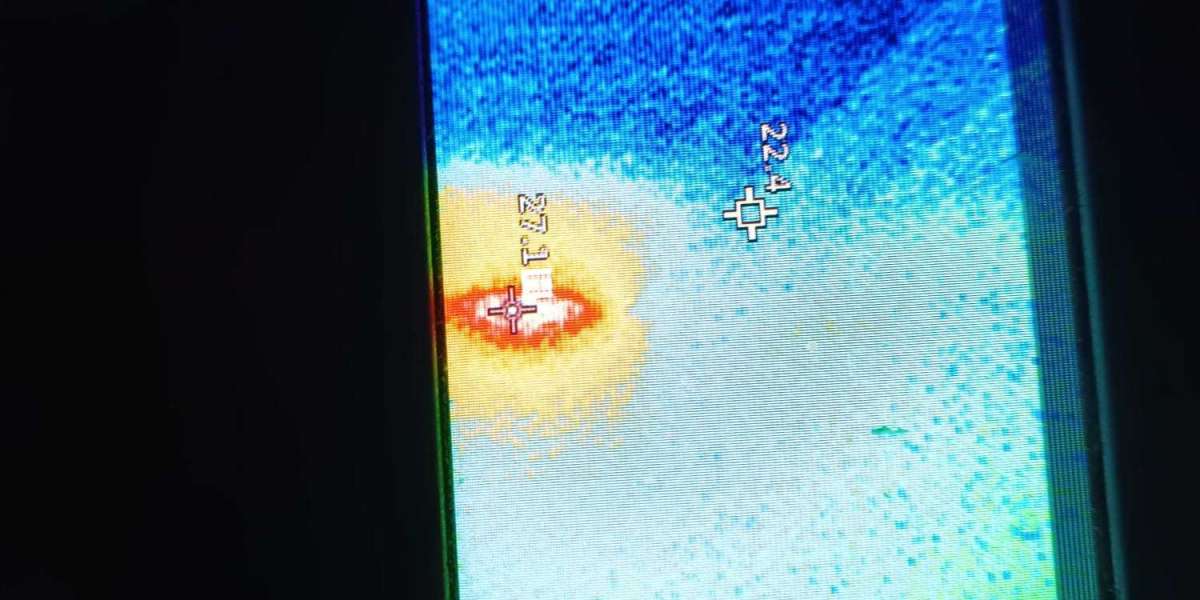Technical characteristics and industry status of horizontal mixers
Horizontal mixers, with their unique structural design and superior mixing performance, have established an irreplaceable position in modern industrial production. Compared to vertical mixers, horizontal designs fully utilize horizontal space, achieving uniform mixing of materials through the rotation of spiral ribbons or paddles. These mixers are particularly well-suited for large-scale, continuous production. They typically offer 30-40% higher efficiency than vertical mixers, while consuming 15-25% less energy, making them the preferred equipment for high-volume production lines.
Core structure and working principle
A typical horizontal mixer consists of a horizontally positioned U- or O-shaped trough, an internal mixing mechanism, a drive system, a discharge device, and a control system. The mixing mechanism typically utilizes a double-layered helical ribbon design, with the inner and outer ribbons rotating in opposite directions to ensure thorough mixing of the material both radially and axially. The latest generation of products, such as the heavy-duty horizontal twin-column unit released by Wanyu Technology, utilizes a "frame-within-a-box" construction with fully rigid rails, significantly improving overall rigidity and resistance to bending and torsion. This structure is particularly suitable for handling high-viscosity materials or those containing solid particles, avoiding the deformation and vibration common in traditional designs.
In terms of operating principle, a horizontal mixer uses a motor-driven reducer to rotate the agitator shaft, causing the helical ribbons or paddles to propel the material through a complex three-dimensional motion. This optimized design achieves uniform mixing within 60-120 seconds, with a coefficient of variation (CV) of mixing uniformity kept below 5%, far exceeding the 10-15% observed in vertical mixers. In terms of unloading, the horizontal design usually adopts the bottom full opening or side unloading method, with a cleaning rate of up to 99.5% and almost no residue, which greatly reduces the risk of cross contamination between batches.
Performance advantages and application areas
The superior performance of horizontal mixers is reflected in multiple dimensions, leading to their widespread application across numerous industrial sectors:
1. Mixing Efficiency: Typical processing capacities range from 0.5 to 20 m³, with large-scale equipment capable of handling 30 tons of material in a single batch. A chemical company saw a 45% increase in production efficiency and an 18% reduction in energy consumption after adopting a 10 m³ horizontal mixer.
2. Material Adaptability: These mixers can handle a wide range of materials, from powders to high-viscosity slurries (up to 500,000 cP). In the pharmaceutical industry, they are used to mix APIs (active pharmaceutical ingredients), achieving uniformity within the GMP requirement of ±2%.
3. Containment: The fully enclosed design meets CIP (cleaning-in-place) and SIP (sterilization-in-place) requirements, complying with FDA and EU GMP standards. A biopharmaceutical company saw a 90% reduction in product contamination after adopting a sanitary horizontal mixer.
4. Multifunctional Integration: Modern equipment often integrates heating/cooling jackets, vacuum systems, and liquid spraying devices, enabling the integration of multiple mixing, reaction, and drying processes. For example, a food additive production line, through integrated design, reduced three processes and saved 40% of its space.
5. Intelligent Control: Equipped with PLC and IoT interfaces, it enables real-time monitoring of parameters such as torque, temperature, and pressure, enabling process digitization and remote operation and maintenance. One company reduced equipment failure rates by 70% through intelligent predictive maintenance.
Market structure and industry standards
The global horizontal mixer market presents a diversified competitive landscape, with the market size projected to reach US$3.87 billion in 2024, growing at a compound annual growth rate of approximately 5.8%. The high-end market is dominated by international brands such as Germany's Lödige and the UK's Baker Perkins. Their products are renowned for their precision and reliability, often priced 50-80% higher than domestic brands. Chinese companies such as Nantong Mixing and Shanghai Sower have established strong competitiveness in the mid-range market through continuous innovation, with some of their technical specifications reaching internationally advanced levels.
In terms of industry standards, horizontal mixers must comply with multiple international and domestic standards:
1. Safety standards: ISO 12100 Mechanical Safety, ATEX explosion-proof certification (for use in flammable and explosive environments)
2. Hygiene standards: 3-A Hygiene Standard (Food and Pharmaceutical), EHEDG certification (European Hygienic Engineering Design Group)
3. Performance standards: GB/T 18823-2020 "Test Methods for Mixer Performance"
4. Energy efficiency standards: Requirements included in the Beijing Recommended Catalogue of Energy-Saving Technology Products
Notably, with tightening environmental regulations and the advancement of the "dual carbon" goals, energy efficiency has become a key consideration for users when choosing horizontal mixers. A 2024 industry survey showed that 58% of purchasing decisions prioritize "energy consumption per unit of output," driving manufacturers to continuously optimize their designs. For example, one brand reduced specific energy consumption from 0.45 kWh/t to 0.38 kWh/t by improving the impeller profile and drive system, a 15.6% reduction.
With these advantages, horizontal mixers have established a core position in many industries. In the chemical industry, about 65% of solid mixing processes use horizontal equipment; in the food industry, formula powder and additive production lines, horizontal mixers account for more than 70%; and in the pharmaceutical industry, horizontal equipment has reached an 85% market penetration rate for mixing high-value APIs. With technological advancements and the expansion of application scenarios, this proportion will continue to increase.
The development history and technological evolution of horizontal mixers
The history of horizontal mixers reflects the trajectory of progress in industrial mixing technology as a whole. From simple mechanical devices to today's highly intelligent and sophisticated equipment, their technological evolution has gone through several landmark stages. Reviewing this journey not only helps us understand the underlying logic of current technology but also foresee its future direction. This article will focus on key breakthroughs over the past two decades, particularly the significant innovations between 2015 and 2024, which fundamentally changed the performance boundaries and application scope of horizontal mixers.
Early development stage (early 20th century-1980s)
The origins of the horizontal mixer can be traced back to the chemical and food processing industries in the early 20th century. The design at the time was extremely simple: a horizontal cylinder containing fixed paddles, driven manually or by a simple mechanical mechanism. With the widespread adoption of electric motors in the 1920s, the first electric horizontal mixer was introduced in Germany. It was used for mixing flour and feed, but mixing times could take over 30 minutes, and uniformity was difficult to achieve. The introduction of the spiral ribbon design in the 1950s marked the first major breakthrough, increasing mixing efficiency by 3-5 times. This basic structure remains the core of many horizontal mixers today.
In the 1970s and 1980s, advances in materials science and machining technology led to stainless steel replacing carbon steel as the primary material for the tank and mixing mechanism, meeting the hygienic requirements of the food and pharmaceutical industries. Representative products of this period, such as the Baker Perkins "Double Helix Conical Mixer" in the UK, achieved mixing uniformity with a CV value of ≤10%, but it also consumed high energy (approximately 1.2 kWh/t) and lacked precise control. Although these devices are simple, they laid the foundation for modern horizontal mixers.
Technology maturity period (1990s-2010)
This period witnessed the rapid maturity and professional development of horizontal mixer technology. In the 1990s, CAD design technology and computational fluid dynamics (CFD) simulations began to be applied to mixer development, enabling engineers to optimize the spiral ribbon shape and rotational speed, reducing mixing time to 5-10 minutes. The "Ploughshare®" plowshare mixer, launched by the German company Lödige, with its unique impeller design, was capable of handling high-viscosity materials (up to 200,000 cP), opening up new applications in the chemical and pharmaceutical industries.
Between 2000 and 2010, two major technological advancements stood out: the widespread adoption of variable frequency drive technology, which enabled precise adjustment of mixing speed based on material properties, reducing energy consumption by 20-30%. Second, the refinement of hygienic design, with internal surface treatments (Ra ≤ 0.8 μm) and quick-opening mechanisms that met 3-A and EHEDG standards, met the increasingly stringent GMP requirements of the biopharmaceutical industry. Horizontal mixers of this period achieved CV values of ≤7%, reduced specific energy consumption to 0.6-0.8 kWh/t, and expanded processing capacities to 5-10 m³.
Breakthroughs in the past decade (2015-2024)
The past decade has been a period of rapid advancement for horizontal mixer technology, with several innovations contributing to overall performance improvements:
Material and structure innovation:
Wanyu Technology's horizontal heavy-load equipment, released in 2024, features a "frame-within-a-box" structure with fully rigid rails, increasing bending and torsional resistance by over 50%, making it particularly suitable for processing thick materials.
The use of aviation-grade aluminum alloy and composite materials reduces the equipment's weight by 20-30% without sacrificing strength.
Special coating technologies (such as PTFE and ceramic coatings) address equipment life issues with highly corrosive materials.
Intelligent control technology:
Integration of the Internet of Things (IoT) and Industry 4.0 technologies enables remote monitoring and predictive maintenance.
A torque sensing system monitors mixing conditions in real time and automatically adjusts speed and mixing time.
Digital twin technology is used for process optimization and equipment management, with one case demonstrating a 15% reduction in trial-and-error costs.
Energy efficiency improvement design:
The application of high-efficiency permanent magnet motors and precise transmission systems reduces specific energy consumption to 0.35-0.5 kWh/t.
The energy recovery system feeds braking energy back into the grid, saving 5-8% of energy.
The relevant standards in the Beijing Energy-Saving Technology Product Recommendation Catalog are driving energy efficiency improvements in the industry.
Multifunctional integration:
The integrated mixing-reaction-drying design reduces material transfer and equipment footprint.
Built-in Cleaning in Place (CIP) and Sterilization in Place (SIP) systems meet aseptic production requirements.
Mixing capabilities under vacuum or inert gas environments extend to handling sensitive materials.
Industry-specific development:
Pharmaceutical Industry: Electronic record keeping system compliant with FDA 21 CFR Part 11
Food Industry: USDA and EU 1935/2004 food contact material certification
Chemical Industry: ATEX explosion-proof certification and high-pressure sealing design
These technological advancements have enabled modern horizontal mixers to achieve unprecedented performance. For example, a flagship model released by an international brand in 2023 boasts a mixing uniformity CV value of ≤3%, a maximum throughput of 20 m³, a mixing time of 60-90 seconds, and a specific energy consumption of only 0.38 kWh/t. The model also features a comprehensive digital interface. Compared to the industry average in 2010, this represents a significant improvement in uniformity by 60%, a 300% increase in efficiency, and a 45% reduction in energy consumption.
These technical approaches are not mutually exclusive. Modern high-end equipment often combines multiple principles to meet complex needs. For example, Wanyu Technology's heavy-duty equipment incorporates a spiral ribbon and plow blade design, ensuring both uniformity and the ability to handle high-viscosity materials. With advances in materials science and control technology, the boundaries between these approaches are blurring, and the future direction of development will be smarter, more flexible, and multi-mode mixing systems.
The development of horizontal mixers clearly demonstrates an evolutionary path from mechanization to automation and then to digital intelligence. Each technological leap has responded to the practical needs of industrial production while also expanding application possibilities. Looking back from the 2025 point, the progress of the past five years has been particularly remarkable, and there remains ample room for future development.
Industry applications and typical cases of horizontal mixers
Horizontal mixers, with their exceptional mixing performance and technical adaptability, have established a core position in numerous industrial sectors. Different industries, based on their respective production needs and material characteristics, have developed diverse application models and technical solutions. This chapter, drawing on real-world case studies and detailed data from the past five years, will provide an in-depth analysis of the application characteristics, technical requirements, and practical benefits of horizontal mixers in key industries, demonstrating how this equipment creates value in diverse production scenarios.
Chemical Industry: Efficient Mixing and Process Intensification
The chemical industry is one of the earliest and most important applications for horizontal mixers, with approximately 65% of solids mixing processes performed using horizontal equipment. Chemical production places extremely stringent demands on mixing processes—maintaining high uniformity among multiple components while also considering material corrosiveness, explosion risks, and stability after scale-up. Modern horizontal mixers have seamlessly addressed these challenges through numerous technological innovations.
Typical case 1: Mixing of lithium battery positive electrode materials
A leading global lithium battery material manufacturer upgraded its cathode material production line in 2023, replacing traditional vertical equipment with a large horizontal plowshare mixer. Features of the new equipment include:
1. A specially designed plowshare and chopping paddle combination achieves uniform dispersion of nano-sized active materials.
2. A fully enclosed design and nitrogen protection system keep oxygen levels below 100 ppm, preventing material oxidation.
3. An integrated temperature control system ensures temperature fluctuations of ≤±2°C during mixing.
4. A variable frequency drive and torque monitoring adapt to the mixing needs of materials with varying viscosities.
Actual results after the upgrade:
1. The CV value of mixing uniformity decreased from 8.5% to 3.2%, improving battery capacity consistency by 15%.
2. The batch processing capacity increased from 2 tons to 5 tons, doubling production capacity.
3. A 22% reduction in unit energy consumption, saving approximately 800,000 yuan in annual electricity costs.
4. The ATEX-certified design reduces the safety incident rate to zero.
Typical Case 2: Polymer Composite Material Production
In 2022, an engineering plastics manufacturer introduced a heated horizontal mixer for the production of glass fiber-reinforced nylon. The equipment's innovative features include:
1. A double-layer spiral ribbon and flying blade design ensures even distribution of long fibers without excessive cutting.
2. An oil-heated jacket with temperature control accuracy of ±1°C ensures optimal resin impregnation viscosity.
3. A wear-resistant carbide-coated impeller extends its service life by three times.
4. An integrated weighing module enables precise metering and dosing of formulation components.
Production data shows:
1. The coefficient of variation in mechanical properties of the product has been reduced from 12% to 5%, meeting automotive industry standards.
2. Fiber length retention has increased from 60% to 85%, and tensile strength has increased by 18%.
3. Color and material change time has been reduced by 70%, accommodating small-batch, high-variety production.
4. The maintenance interval has been extended from 500 hours to 1500 hours.
Application experience in the chemical industry demonstrates that horizontal mixers not only provide excellent mixing quality but also significantly improve end-product performance and production efficiency through process enhancement. An industry survey in 2024 showed that chemical companies that adopted advanced horizontal mixers reduced their product rejection rate by an average of 40%, energy consumption by 18-25%, and the return on investment was usually 1.5-2 years.
Food and feed industry: hygiene, safety and large-scale production
The food and feed industries place unique demands on horizontal mixers. Beyond mixing efficiency, hygienic design, material safety certifications, and ease of cleaning often outweigh technical specifications. In recent years, with increasingly stringent food safety regulations and rising consumer demands for quality, technological innovations in food-grade horizontal mixers have primarily focused on these requirements.
Typical Case 3: Infant Formula Production
In 2021, an international dairy group launched a new formula milk powder production line at its Asian facility. The core equipment includes two 10m³ sanitary-grade horizontal mixers. Key design features:
1. All-stainless steel construction with an internal surface area Ra ≤ 0.4μm and a zero-dead-angle design that complies with EHEDG EL Class I standards.
2. An integrated CIP cleaning system reduces cleaning time from 4 hours to 1.5 hours and reduces water consumption by 60%.
3. A high-precision trace ingredient addition system ensures uniform distribution of vitamins and minerals.
4. An IoT interface seamlessly integrates mixing parameters with the MES system, meeting FDA traceability requirements.
Operational Data Comparison:
1. Product nutrient uniformity reaches ±2%, exceeding the national standard of ±5%.
2. Microbial contamination risk is reduced by 90%, achieving BRCGS AA+ certification.
3. Batch changeover time is reduced by 65%, accommodating flexible production of multiple formulas.
4. Annual production capacity has increased from 30,000 tons to 50,000 tons to meet the growing needs of the Asia-Pacific market.
Typical Case 4: Aquatic Feed Additive Premix
In 2020, a leading feed additive company renovated its premixing plant, employing two 5m³ dust-proof horizontal mixers. Technical Innovations:
1. Negative pressure dust removal design, ensuring a working environment dust concentration of <1mg/m³, far below the industry standard of 3mg/m³.
2. Wear-resistant ceramic-coated impellers with a service life of over 10,000 hours.
3. Anti-static design prevents uneven distribution of trace ingredients due to static adsorption.
4. Automatic oil spraying system ensures uniform adhesion of fat-soluble vitamins.
Improved Production Efficiency:
1. Mixing uniformity CV value ≤5%, trace element distribution deviation <3%.
2. Equipment utilization increased from 65% to 85%, increasing annual production by 3,000 tons.
3. Dust explosion risk completely eliminated, reducing insurance costs by 30%.
4. Occupational health complaints from operators reduced to zero.
The application of horizontal mixers in the food and feed industry highlights the unique advantages of horizontal mixers in terms of hygiene, safety, and scalable production. According to 2024 statistics, 43 of the world's top 50 food companies use horizontal mixers in their core production lines. This proportion has increased by 15 percentage points in the past five years, reflecting the industry's continued preference for efficient and hygienic mixing solutions.
Pharmaceuticals and Biotechnology: Precision Control and Compliant Production
The pharmaceutical industry is perhaps the most technically demanding application for horizontal mixers, particularly for the mixing of active pharmaceutical ingredients (APIs), which places stringent requirements on uniformity, cross-contamination control, and process validation. Pharmaceutical-grade horizontal mixers, manufactured under modern GMP standards, have evolved into highly specialized, precision equipment.
Typical Case 5: Anticancer Tablet API Mixing
In 2023, a multinational pharmaceutical company commissioned a GMP-compliant aseptic horizontal mixing system at its European production site. Key Technical Features:
1. 316L stainless steel construction, electropolished to Ra ≤ 0.2μm, meeting FDA cGMP requirements.
2. Fully enclosed design, achieving OEB level 5 (≤ 1μg/m³), protecting highly active ingredients.
3. Integrated clean-in-place (WIP) and steam sterilization (SIP) systems, ensuring cleaning validation.
4. Process Analytical Technology (PAT) monitors mixing uniformity in real time, replacing traditional sampling and testing.
5. An electronic recordkeeping system compliant with FDA 21 CFR Part 11 ensures data integrity.
Validation Results:
1. Mixing uniformity RSD ≤ 2%, meeting USP <905> standards.
2. Batch-to-batch carryover < 0.1%, meeting EMA cross-contamination guidelines.
3. Process validation time reduced from 2 weeks to 3 days, accelerating product launch.
4. Annual production capacity increased to 150 batches, meeting global market demand.
Case Study 6: Preparation of Lipid Nanoparticles for mRNA Vaccines
A biotechnology company employed a specially designed horizontal micromixing system in the production of its COVID-19 vaccine. Innovative Designs:
1. Precision temperature control system (±0.5°C) maintains lipid membrane fluidity.
2. Low-shear mixing design protects the structural integrity of the nanoparticles.
3. Disposable mixing bag technology completely eliminates cross-contamination.
4. Integrated online pH and particle size monitoring enables real-time feedback and adjustment.
Production Results:
1. Nanoparticle encapsulation efficiency increased from 85% to 95%, enhancing vaccine efficacy.
2. Batch-to-batch particle size distribution consistency (CV) ≤ 5%, far exceeding industry standards.
3. Production cycle shortened by 30%, meeting urgent pandemic needs.
4. Passed FDA Emergency Use Authorization (EUA) and EMA rolling review.
This case study from the pharmaceutical industry demonstrates that horizontal mixers have evolved from simple mixing tools to critical process equipment for ensuring drug quality. The 2024 industry report shows that the global pharmaceutical-grade horizontal mixer market has reached US$780 million, with an annual growth rate of 9.2%, far higher than the industrial average, reflecting the pharmaceutical industry's continued demand for high-end mixing technology.
Emerging application areas and cross-border innovation
Advances in materials science and manufacturing technology are opening up new areas of application for horizontal mixers. Mixing tasks that were unimaginable just five years ago are now standard.
3D Printing Metal Powder Preparation: An additive manufacturing company uses an inert gas-protected horizontal mixer to process titanium alloy powder, controlling the oxygen content to <800ppm, improving fluidity by 20%, and achieving print density exceeding 99.5%.
Solid-State Battery Electrolyte Mixing: In 2024, a battery R&D center developed a dry electrode process using a horizontal mixer to uniformly mix the solid electrolyte and conductive agent, reducing interfacial impedance by 40% and increasing battery cycle life by threefold.
Carbon Neutral Materials: In the preparation of direct air carbon capture (DAC) adsorbents, a horizontal mixer ensures uniform loading of the amine-based material onto the porous carrier, increasing CO₂ adsorption capacity by 25% and reducing regeneration energy consumption by 15%.
These emerging applications share common characteristics: high technical complexity, challenging mixing, and demanding equipment performance requirements. Through continuous innovation, horizontal mixers not only meet existing needs but also promote the research and development and industrialization of new materials. It is foreseeable that with the energy transition and the development of high-tech industries, horizontal mixers will play a key role in more cutting-edge fields.
These real-world cases and data fully demonstrate the core value of horizontal mixers across various industries. Whether upgrading traditional industries or innovating in emerging sectors, horizontal mixers demonstrate strong adaptability and technological potential. With the accumulation of application experience and cross-industry technical exchanges, their performance boundaries will continue to expand, providing solutions for a wider range of industrial needs.
Future development trends and technological frontiers of horizontal mixers
Looking back from the technological forefront of 2025, horizontal mixers have evolved from simple mechanical mixing devices into complex systems integrating technologies from multiple fields, including materials science, intelligent control, energy conservation, and environmental protection. Over the next five to ten years, with the deepening implementation of Industry 4.0 and the advancement of global carbon neutrality goals, horizontal mixer technology will undergo even more profound changes. This chapter will analyze the future development direction of horizontal mixers based on the latest research results, industry trends, and technology roadmaps, and explore innovative breakthroughs that may reshape the industry landscape.
Deep integration of intelligence and digitalization
Intelligent Perception and Adaptive Control: The next generation of horizontal mixers will be equipped with more advanced sensor networks to monitor multi-dimensional parameters such as torque, temperature, pressure, humidity, and particle distribution in real time. Machine learning algorithms will be used to adaptively optimize the mixing process. A German company is currently testing a "cognitive mixer" prototype that uses high-frequency torque fluctuation analysis to determine material state and automatically adjust speed and mixing time. This is expected to reduce energy consumption by another 15-20% and shorten mixing time by 30%. This process control based on real-time data will revolutionize the traditional operating model that relies on fixed parameters and manual experience.
Digital Twins and Virtual Commissioning: Digital twin technology will play a core role in the full lifecycle management of horizontal mixers. Leading companies such as Wanyu Technology have begun building complete digital twin systems covering design, manufacturing, operation, and maintenance. High-fidelity simulation models allow users to test different formulations and process parameters in a virtual environment, significantly reducing the trial-and-error costs associated with actual production. A pharmaceutical project in 2024 demonstrated that the implementation of digital twin technology reduced process development time by 60%, significantly accelerating the speed of new product launches. Future digital twin systems will also integrate supply chain and energy data for global optimization.
Predictive Maintenance and Remote Operation and Maintenance: IoT- and AI-based predictive maintenance systems will become standard for high-end horizontal mixers. By analyzing equipment health indicators such as vibration, noise, and temperature, the system can predict the failure risk of vulnerable parts like bearings and seals weeks in advance and schedule optimal maintenance. A multinational chemical group deployed an intelligent mixer operation and maintenance platform across 23 plants, reducing unplanned downtime by 75% and maintenance costs by 40%. The widespread adoption of 5G technology will further enhance remote diagnostic and guidance capabilities, particularly for equipment in remote locations or hazardous environments.
Blockchain and Quality Traceability: For the pharmaceutical and food industries, the integration of blockchain technology with horizontal mixers will enable full traceability of the mixing process. Each batch's mixing parameters, equipment status, and operation records will be stored on the blockchain, immutably ensuring compliance with increasingly stringent regulatory requirements. The EU's Digital Product Passport initiative began piloting this application in 2024 and is expected to become an industry standard by 2027.
Breakthroughs in material and structural innovation
New wear-resistant and corrosion-resistant materials: Material challenges in extreme operating conditions remain a constant challenge for horizontal mixers. Breakthroughs are expected in the following material technologies over the next few years:
Graphene-enhanced composites: Laboratory tests have shown that adding a small amount of graphene can increase the wear resistance of mixing impellers by 3-5 times. Commercial application is expected in 2026-2027.
Self-healing coatings: Bio-inspired microcapsule self-healing coatings automatically release a repair agent at scratches, extending equipment maintenance cycles.
Superhydrophobic surfaces: Nanostructured surfaces mimicking the lotus effect reduce material adhesion and reduce cleaning water usage by 90%.
Modular and reconfigurable designs: To meet the flexible production needs of small batches and a wide variety of products, horizontal mixers will develop modular designs. Users can quickly replace the mixing mechanism (spiral ribbons, plow blades, shearing impellers, etc.), tank lining, and drive system according to different material properties, achieving "one machine for multiple uses." A Swiss company is developing a "Lego-style" mixer that can switch from powder mixing to high-viscosity slurry processing within 4 hours, increasing equipment utilization by over 50%. Superscaling and miniaturization go hand in hand: two seemingly opposing trends will develop simultaneously. On the one hand, industries like petrochemicals and metallurgy require ultra-large mixers with a processing capacity exceeding 50m³. Wanyu Technology's heavy-duty design provides the technical foundation for such equipment. On the other hand, the pharmaceutical and electronic materials sectors are pursuing miniaturized devices with a processing capacity of less than 50L but extremely high mixing precision for the research and development and small-batch production of expensive active ingredients or nanomaterials.
Bionic design: Mimicking the mixing principles of biological systems could lead to revolutionary breakthroughs. For example, by drawing on the peristaltic mixing mechanism of bird digestive systems or the vortex fields generated by swimming fish, new low-energy mixing mechanisms can be designed. A British research team has developed a prototype "bionic mixing fin" that uses 40% less energy than traditional spiral ribbon designs and has demonstrated conceptual feasibility at a laboratory scale.
Green Manufacturing and Energy Efficiency Revolution
Energy-saving innovation driven by carbon neutrality: As the global carbon neutrality movement accelerates, energy efficiency standards for horizontal mixers will continue to rise. Policy tools such as the Beijing Recommended Catalog of Energy-Saving Technology Products will continue to drive technological advancement in the industry. Energy-saving technologies likely to become widespread in the future include:
Magnetic bearings: Eliminate mechanical friction, with an estimated energy savings of 8-12%.
Energy recovery systems: Convert braking energy into electricity and feed it back into the grid.
Phase change material temperature control: Leverage latent heat to maintain process temperatures, reducing active heating/cooling energy consumption.
Clean technologies and waste reduction: Reducing the use of cleaning water and chemicals will be a key development direction. Waterless cleaning technologies (such as CO₂ dry ice blasting), self-cleaning surfaces, and disposable mixing bag systems will become increasingly popular. A "zero-emission" mixing system developed by a Nordic company uses closed-loop cleaning and wastewater reuse to reduce cleaning water consumption from 300L to 5L per batch. It is expected to be launched in 2026.
Interdisciplinary integration and new application development
Nanotechnology and Precision Mixing: Nanomaterial preparation places unprecedented demands on mixing technology for precision. Future "nanoscale horizontal mixers" may combine technologies such as microfluidics, acoustic levitation, and electric field control to achieve atomic-scale composition control. A national research institute is developing a mixing system for quantum dot synthesis with temperature control accuracy of ±0.1°C and concentration uniformity of >99.9%.
Biotechnology and Pharmaceutical Innovation: The development of cell therapy and gene therapy requires gentler and more precise mixing solutions. Biomimetic mixing technology can simulate the fluid environment in the body, protecting the integrity of fragile biological structures. Next-generation mixing systems for mRNA-LNP (lipid nanoparticle) preparation are demonstrating their value in clinical trials and are expected to increase vaccine production efficiency by another 30%.
Disruptive Demands in Food Technology: Emerging fields such as plant-based protein, cultured meat, and personalized nutrition will reshape food mixing technology. New applications such as slurry preparation for 3D-printed food and mixing bioinks for cultured meat scaffolds require horizontal mixers with unprecedented precision and hygiene standards. A food tech startup has developed a "molecular-level" mixer that ensures uniform distribution of vitamins and minerals in plant-based meat, achieving nutritional consistency of ±1%.
Space Manufacturing and Extreme Environment Applications: As space manufacturing moves from concept to reality, horizontal mixer designs adapted to microgravity will become a key technology. A NASA-funded study is developing a concrete mixing system for lunar base construction, addressing unique challenges such as the absence of water and the properties of lunar dust. Extreme environment applications on Earth, such as deep ocean and polar regions, will also drive further improvements in equipment reliability.
Low-carbon materials and manufacturing processes: The carbon footprint of the equipment itself will also be scrutinized. The use of low-carbon stainless steel (such as steel produced from hydrogen-based direct-reduced iron), lightweight design, and additive manufacturing technologies can reduce carbon emissions from the horizontal mixer production process by 30-50%. Life cycle assessment (LCA) methods will become an important factor in equipment selection.
Renewable energy integration: Factory-level photovoltaic-energy storage-mixer systems will increase the direct use of renewable energy. Experience from the Fujian Zero Carbon Park shows that with appropriate system design, renewable energy can meet over 80% of power needs. In the future, "flexible mixers" designed specifically for intermittent power sources, with rapid start-up and shutdown capabilities and power adjustment capabilities, may emerge.
Industry ecology and business model innovation
Technological evolution will be accompanied by a reshaping of the industry ecosystem, with the following trends likely to emerge:
Service-oriented transformation: Equipment manufacturers will shift from product sales to service provision, introducing a "mixing-as-a-service" model. Users pay based on the amount of mixing or uniformity achieved, without having to directly invest in equipment. A European company has already begun piloting this model, with positive customer feedback. It is particularly suitable for small and medium-sized enterprises and R&D institutions.
Sharing platforms and distributed manufacturing: Blockchain-based shared manufacturing platforms can optimize the utilization of horizontal mixer resources within a region. High-value equipment can be time-shared through smart contracts, improving utilization and lowering the barrier to entry for small and medium-sized enterprises. This aligns well with the energy-saving technology sharing concept promoted by Beijing.
Open source hardware and collaborative innovation: Basic horizontal mixers may become open source, allowing developers around the world to contribute to improved designs, similar to the current 3D printer community model. Specialized companies will focus on high-end applications and value-added services.
Circular economy and equipment recycling: The used equipment remanufacturing market will develop in a standardized manner. By replacing core components and upgrading technologies, the performance of used equipment can be brought close to that of new equipment, extending its lifecycle by 50-100%. This is completely consistent with the direction of improving resource efficiency under the carbon neutrality goal.
These development trends collectively paint a picture of the future of horizontal mixer technology—one that is smarter, more efficient, and more sustainable, deeply integrated into a digital and low-carbon industrial ecosystem. For equipment manufacturers and users, accurately grasping these trends and proactively developing key technologies will give them a competitive edge in the future. The horizontal mixer, a seemingly traditional piece of industrial equipment, is at the cusp of a technological revolution, with development potential far exceeding most people's current imagination.








